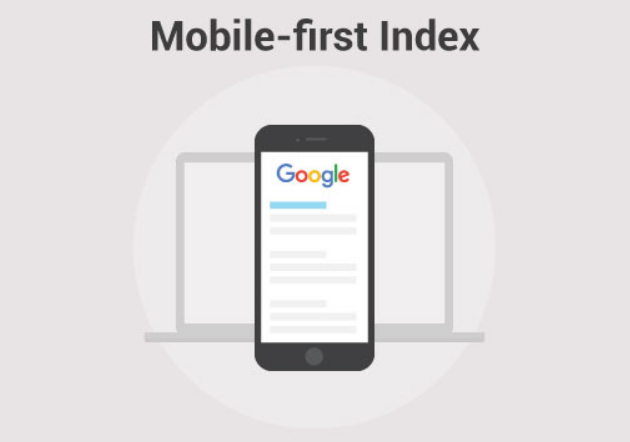
Google Mobile First Index: Mobile search with smartphones has become increasingly important in recent years. So important that Google wants to move the ranking index to a mobile-first index. Here you read everything you need to know.
1 – What is the Google Mobile First Index
Above all, the new index means a change of base. So far, the index is based on the desktop versions of the websites. This will change with the new index. The mobile version of a website now forms the basis for the search results.
This does not mean that the desktop is “dead”. If a website does not have a mobile version or is not responsive, then the desktop variant will be used for the ranking. Indeed:
2 – Can there be disadvantages in the ranking?
If a website is not responsive or does not have a mobile version, this can lead to disadvantages in the ranking. The reason should be clear: the user experience is significantly worse.
If a website has an insufficiently optimized mobile version, it can also lead to ranking disadvantages of the desktop variant.
3 – The mobile website becomes the foundation
Not a big surprise, actually. A large part of the population mainly uses smartphones for surfing and communicating. Desktops and notebooks are only used by the younger generation if they can not be avoided.
The mobile website becomes the foundation of the ranking index. There will not be two separate mobile and desktop indexes.
Companies with a responsive website or a mobile version that delivers the same content will probably not suffer any disadvantages.
4 – Mobile PageSpeed becomes a ranking factor
In addition, the PageSpeed of mobile website versions will become the ranking factor from July. Since 2010, PageSpeed is already a ranking factor for desktop variants, which will also persist.
The load time of a website has a direct impact on the bounce rate, as a study directly illustrated by Google.

Source: Google / SOASTA Research, 2017.
The relevance of PageSpeed is no secret. The numbers are impressive. Now is the time to take care of the mobile versions of the sites.
Google itself sees a load time of 3 seconds under 3G for optimal.

Best Practice: Mobile Speed of under 3 seconds.
5 – Websites should be ready for the Mobile-First Index if:
- they offer the same content on mobile and desktop
- the outgoing links are the same
- Pictures and alt tags are also available in the mobile version
- structured data and possibly href-long tags are available
- The server is powerful enough for mobile / responsive sites.
6 – SEO: There needs to be a rethink
SEOs should now focus on the mobile variants of websites and take action there. But it’s not just content that counts, there are a lot more issues on the agenda.
7 – The following things every SEO should implement for you now:
- A speed optimization of the mobile or responsive version of the websites
- Implement complete structured data
- Maybe integrate href-long tags
- Decide if imagery is important to the context
- Check if plugins are necessary in the responsive version
- Check the performance of the server. Because in the future, Google crawls not only the desktop, but also the mobile version with a special bot in addition .
- Integrate Open-Graph and Twitter Cards
Additionally, for a stand-alone mobile website:
- Check if the same content as the desktop is delivered (texts, pictures, and videos)
- Are the old tags of the pictures the same for both versions?
- Is the mobile page also verified in Google Search Console?
- Are the title and meta description the same in terms of content? (It does not have to be identical)
- Are the important open graph elements integrated into the header?
- Are the Meta-Robots tags identical?
- Is the Sitemap.xml mobile also accessible?
8 – What happens if not all content is mobile?
Many companies have decided not to offer the entire content on the mobile version of the website. Maybe for the reason that visitors searched for other content on mobile devices and therefore not all content was needed.
Of course, there will be a transitional period from Google here. As a result, the desktop version is not immediately removed from the index. Nevertheless, now action is announced since all content should be accessible to mobile users in the future.
Because one thing seems certain: after a transitional period, Google will rank websites that do not make the entire content mobile. In addition, a separation by individual devices does not make sense.
Online purchases are made more and more from the smartphone, fast searches also run mostly on the phone. The user experience is King, a responsive website – well-optimized – is certainly your best bet for the future.
My conclusion about the Google Mobile First Index:
The future is mobile. But nobody has to panic, the transitional period will give all companies sufficient time to change or optimize.
SEOs can approach the new environment, the ranking in 2018 will not affect the new Mobile First Index yet. And PageSpeed is already a not insignificant ranking factor today.

Comments are closed.